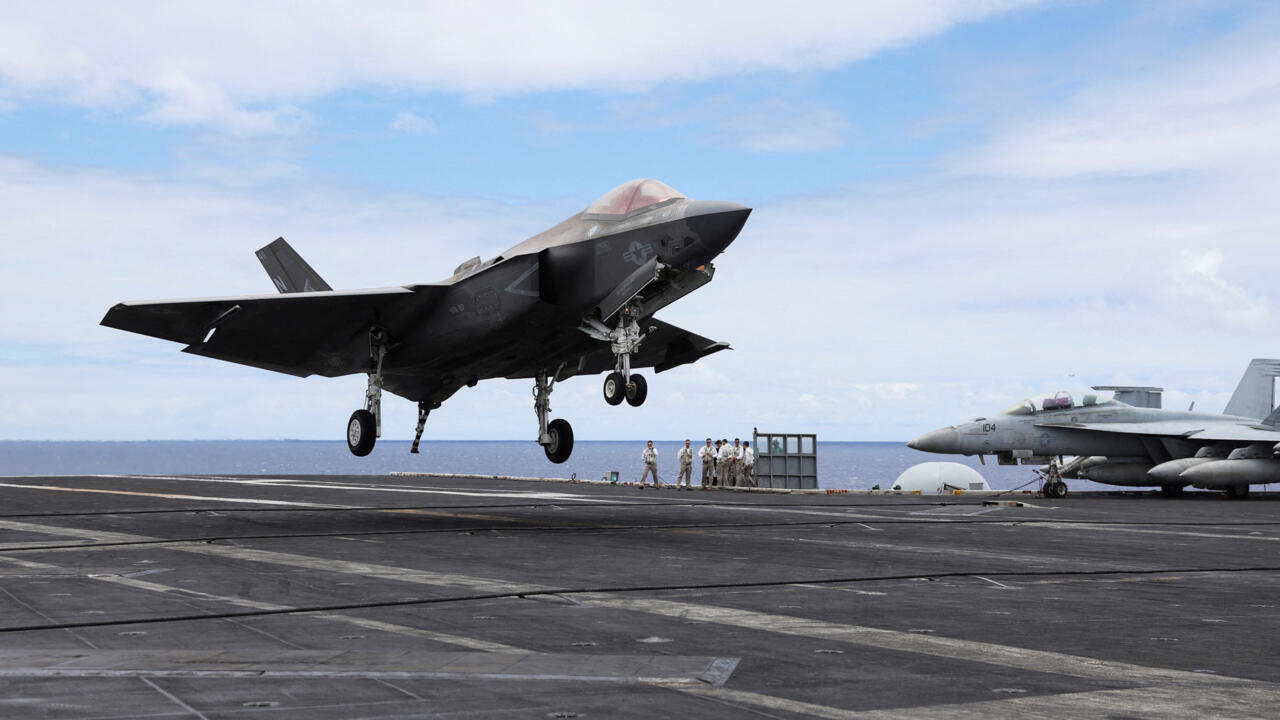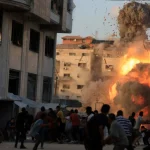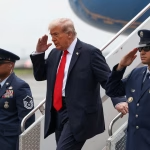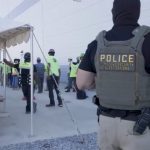The United States has escalated its fight against international narcotics trafficking with a powerful and symbolic move: deploying ten fighter jets to Puerto Rico to spearhead a new wave of anti-drug operations in the Caribbean. This decision reflects not only the urgency of countering increasingly sophisticated drug smuggling networks but also Washington’s determination to reassert control over one of the most critical transit corridors for narcotics heading toward American shores. For decades, the Caribbean has served as a silent but pivotal battleground in the global war on drugs, and Puerto Rico, as both U.S. territory and strategic outpost, has now become the center of a renewed military-driven campaign.
- Why Puerto Rico is the Strategic Epicenter of Anti-Drug Missions
- The Role of Fighter Jets in Counter-Narcotics Operations
- A Crisis Driving the Mission: Drug Overdoses in the U.S.
- Supporters of the Deployment: A Necessary Defense
- Critics of the Move: Militarization and Root Causes
- Impact on Puerto Rico: Opportunities and Tensions
- The Regional and Global Signal
- The Future of Caribbean Anti-Drug Operations
- FAQs
- Why did the U.S. deploy fighter jets to Puerto Rico?
- How will fighter jets help stop drug trafficking?
- What impact will this have on Puerto Rico?
- Will this stop drug trafficking into the U.S. entirely?
- What does this mean for U.S. relations with Latin America?
- Conclusion
The deployment represents one of the largest air power commitments in years to an anti-drug mission. It introduces a new dynamic to enforcement strategies that have traditionally relied on maritime patrols, radar surveillance, and cooperative agreements with regional governments. Fighter jets bring speed, technological sophistication, and deterrent value, making them a game-changer in the skies where traffickers once exploited gaps in enforcement. For many, this move signals a turning point in U.S. anti-drug policy, blending military muscle with counter-narcotics intelligence in a way that could either redefine success or spark fresh debate about militarization and long-term effectiveness.
Why Puerto Rico is the Strategic Epicenter of Anti-Drug Missions
Puerto Rico is more than just a tropical island in the Caribbean—it is a critical linchpin in America’s defense against drug trafficking. Its geographical location places it directly along some of the busiest smuggling routes from South America to the mainland United States. Colombian and Venezuelan traffickers often use the Caribbean as a staging ground, relying on airstrips in remote islands or airdropping cargo into waters where fast boats retrieve the shipments. Puerto Rico’s proximity to these routes makes it an ideal hub for U.S. surveillance and interdiction.
Because Puerto Rico is a U.S. territory, the American military can operate there without diplomatic hurdles. Unlike in foreign countries where basing agreements must be negotiated, Puerto Rico provides unrestricted access for advanced aircraft, radars, and support infrastructure. This allows for constant patrols, rapid deployment, and coordination with the U.S. Coast Guard and Customs and Border Protection. According to U.S. authorities, nearly 40 percent of cocaine destined for the American mainland passes through the Caribbean corridor, either by sea or by air. Puerto Rico, with its ports, airports, and close integration into U.S. commerce, often becomes a gateway exploited by traffickers. Deploying fighter jets to the island sends a strong message that this gateway will no longer be left vulnerable.
The Role of Fighter Jets in Counter-Narcotics Operations
Fighter jets are not typically associated with drug enforcement, yet their deployment in Puerto Rico demonstrates the evolving sophistication of anti-narcotics strategies. Traffickers frequently rely on small aircraft, known as narco-flights, to move drugs discreetly across the Caribbean. These planes often fly low, slow, and under radar coverage, making them difficult for conventional surveillance systems to detect. Fighter jets, equipped with cutting-edge radar and tracking systems, can spot and intercept these elusive aircraft.
Beyond detection, the speed and reach of fighter jets allow for rapid interception. When a suspicious aircraft enters Caribbean airspace, fighter jets can quickly close in, establish contact, and either escort it to a landing or relay its position to Coast Guard and Navy vessels waiting for interception. Their presence alone serves as a deterrent. Traffickers understand that operating in airspace patrolled by advanced U.S. jets greatly increases their risk of losing cargo, equipment, and personnel.
As one former Pentagon analyst observed, “The goal is not just to chase smugglers but to raise the cost of doing business so high that traffickers are forced to rethink their routes. A fighter jet patrolling the skies sends a signal that the Caribbean is no longer a safe corridor.”
A Crisis Driving the Mission: Drug Overdoses in the U.S.
The urgency behind this deployment cannot be divorced from the domestic crisis gripping the United States. In 2023, the Centers for Disease Control and Prevention reported more than 100,000 overdose deaths, a devastating milestone fueled primarily by synthetic opioids like fentanyl. While fentanyl has dominated headlines due to its deadly potency, cocaine and other narcotics continue to pour into the U.S. from South America. These substances are often cut with fentanyl or other chemicals, amplifying their lethality.
Colombian cartels remain among the most powerful players in this trade, often working with Venezuelan networks and Caribbean facilitators. Their operations are sophisticated, involving encrypted communications, semi-submersible submarines, and elaborate smuggling chains that move drugs through multiple countries before they reach U.S. soil. By targeting the transit phase—intercepting shipments in the Caribbean—the U.S. hopes to disrupt these networks before drugs reach American communities. Officials argue that every kilogram seized in the Caribbean prevents countless doses from ever hitting the streets.
Supporters of the Deployment: A Necessary Defense
Supporters of the decision to send fighter jets to Puerto Rico argue that it is a bold and necessary measure. The Caribbean, they note, has become a “soft underbelly” in America’s defenses, exploited by traffickers who have learned to avoid heavily monitored routes along the U.S.-Mexico border. By reinforcing Puerto Rico with advanced air power, the U.S. is closing one of the most glaring gaps in its anti-drug net.
Former Coast Guard officials stress that this deployment is not just symbolic but operationally critical. “When you place fighter jets in Puerto Rico, you’re cutting off one of the main arteries for cocaine trafficking into the mainland. It makes smugglers think twice and forces them into riskier, more expensive alternatives,” one retired admiral explained. For law enforcement agencies overwhelmed by the scale of trafficking, the addition of military assets provides much-needed support.
Critics of the Move: Militarization and Root Causes
Not everyone is convinced. Critics warn that relying on fighter jets risks turning a public health and law enforcement issue into a military campaign. Puerto Ricans in particular are sensitive to the history of U.S. military activities on the island, such as the controversial use of Vieques as a bombing range for decades. Civil society groups fear that a permanent military footprint could harm local communities, generate environmental risks, and contribute little to solving the core issues driving the drug crisis.
Drug policy experts also caution that traffickers are highly adaptable. While fighter jets may disrupt certain routes, cartels can shift operations to other areas, including Central America or Africa, before drugs eventually reach the U.S. Moreover, enforcement-heavy approaches often overlook the demand side of the equation. As one researcher from the Brookings Institution put it, “You can patrol every inch of the Caribbean, but as long as demand for narcotics remains sky-high in the U.S., supply chains will evolve to meet it.”
Impact on Puerto Rico: Opportunities and Tensions
For Puerto Rico itself, the deployment carries both potential benefits and concerns. On one hand, the presence of fighter jets and expanded military operations could bring federal investment, jobs, and infrastructure upgrades. Local businesses may benefit from contracts related to support and maintenance of the aircraft. The island’s economy, still recovering from hurricanes and financial crises, could use any injection of federal resources.
On the other hand, there are fears of Puerto Rico becoming a permanent staging ground for U.S. military operations with little say in decision-making. Community leaders stress that if Washington expects Puerto Rico to serve as the frontline in anti-drug efforts, it must also invest in the island’s long-term resilience, healthcare, and social welfare. “Security should go hand in hand with opportunity,” one San Juan mayoral candidate argued, warning against a purely military footprint without community development.
The Regional and Global Signal
The deployment also has implications far beyond Puerto Rico. Latin American governments are closely watching how Washington’s new Caribbean focus will affect them. Colombia has long been a partner in anti-drug operations, but Venezuela, accused of turning a blind eye or even aiding traffickers, could face increased pressure. By reinforcing Puerto Rico, the U.S. demonstrates its willingness to act unilaterally when regional cooperation falters.
Globally, the move fits into a broader narrative in which the U.S. views transnational organized crime as a national security threat on par with terrorism or cyberattacks. By treating drug trafficking with military seriousness, Washington signals that it will deploy its full range of assets—not just law enforcement—to protect its people.
The Future of Caribbean Anti-Drug Operations
Looking ahead, analysts predict that the deployment of fighter jets may be the first step in a larger, long-term strategy. Emerging technologies such as drones, satellites, and artificial intelligence are likely to be integrated into future anti-drug campaigns. Regional intelligence-sharing agreements may expand, and the U.S. could push for greater collaboration with Caribbean nations to close gaps traffickers might exploit.
Still, sustainability remains a key question. Fighter jets are costly to maintain, and keeping them in Puerto Rico indefinitely may not be practical. The long-term effectiveness of this strategy will depend on whether it can adapt to traffickers’ changing tactics and whether it is complemented by broader investments in treatment, prevention, and international partnerships.
FAQs
Why did the U.S. deploy fighter jets to Puerto Rico?
The U.S. deployed fighter jets to Puerto Rico to strengthen anti-drug operations in the Caribbean. Puerto Rico’s location makes it a key chokepoint for narcotics smuggling routes from South America to the mainland.
How will fighter jets help stop drug trafficking?
Fighter jets provide advanced detection and rapid interception of narco-flights, which are small planes used by traffickers to transport drugs. Their presence deters traffickers and helps coordinate interdictions with the Coast Guard and Navy.
What impact will this have on Puerto Rico?
The impact is mixed. Economically, the island may benefit from federal investment and job opportunities linked to the deployment. However, residents worry about militarization, environmental risks, and limited say in U.S. military decisions.
Will this stop drug trafficking into the U.S. entirely?
No, it is unlikely to stop it completely. Criminal networks are highly adaptable and may shift to other routes. However, the deployment will disrupt existing operations, increase the cost of smuggling, and improve interdiction rates.
What does this mean for U.S. relations with Latin America?
The deployment signals U.S. resolve to act decisively against traffickers. It may strengthen partnerships with allies like Colombia but increase tensions with countries such as Venezuela, which have been accused of tolerating trafficking networks.
Conclusion
The deployment of U.S. fighter jets to Puerto Rico represents a bold escalation in America’s decades-long struggle against drug trafficking. It underscores the strategic importance of Puerto Rico as both a frontline defense and a symbol of U.S. determination to safeguard its people from narcotics-driven crises.
Fighter jets bring speed, technology, and deterrence to a fight that has too often been defined by traffickers’ ability to outmaneuver enforcement. Yet, the move also raises complex questions about militarization, sustainability, and whether enforcement alone can solve a problem deeply rooted in economics, demand, and international politics.









